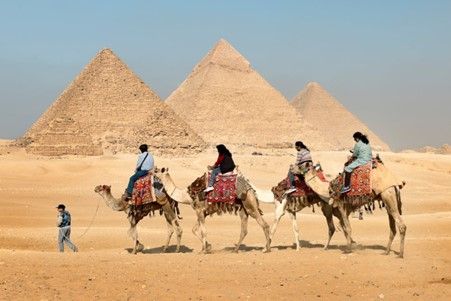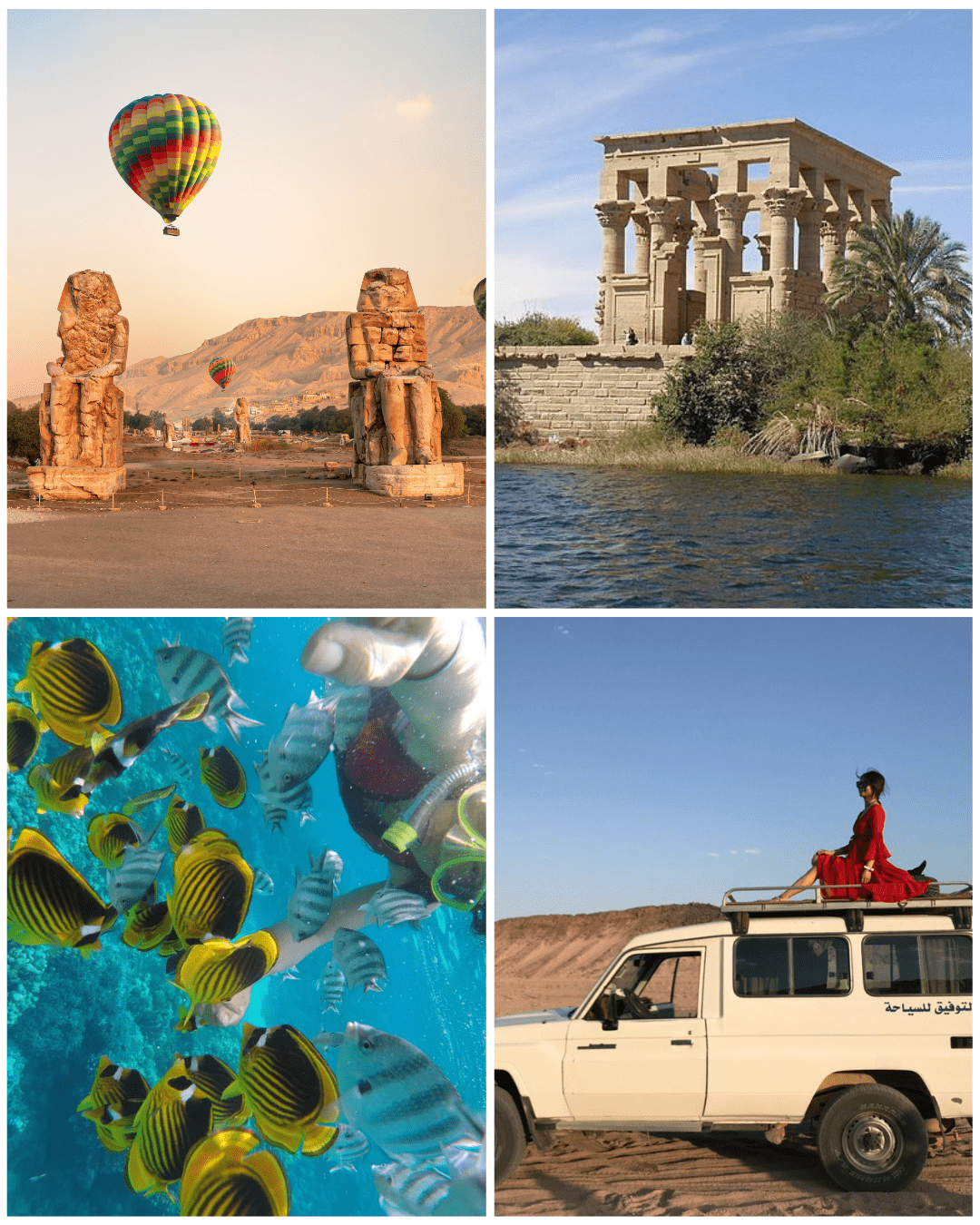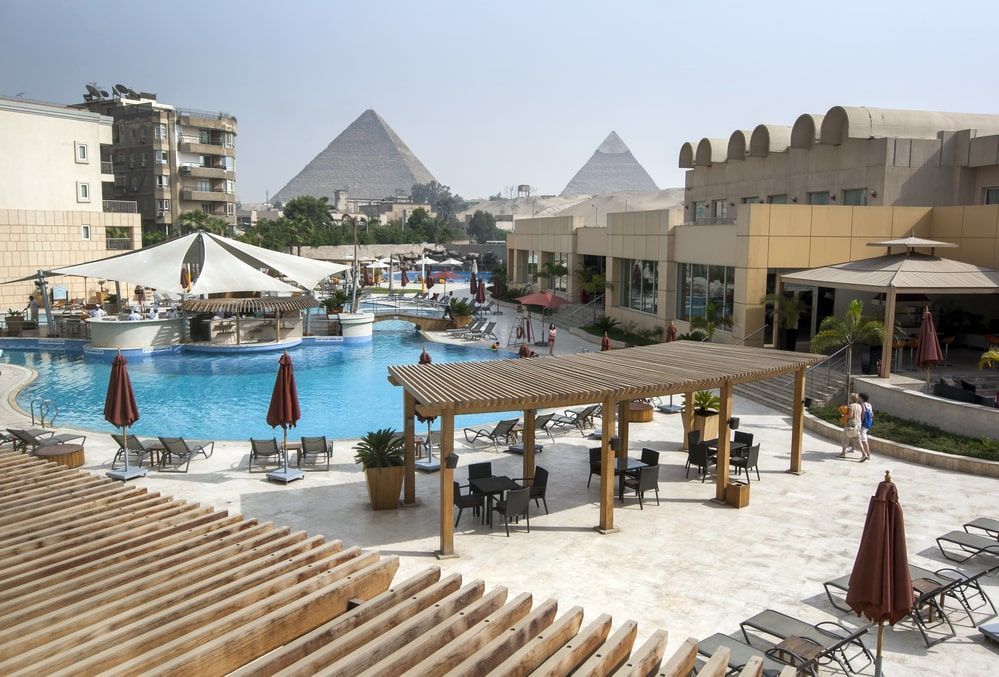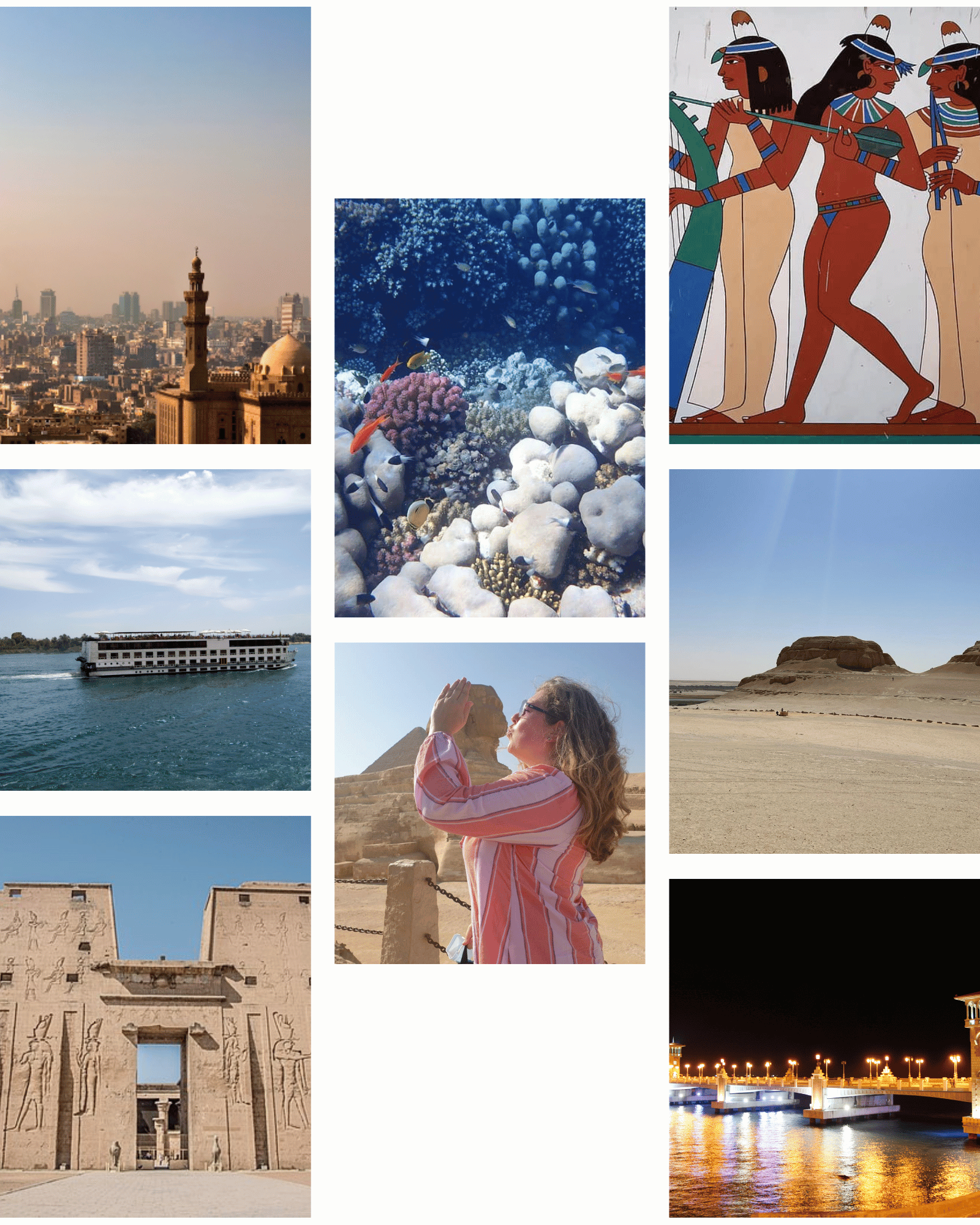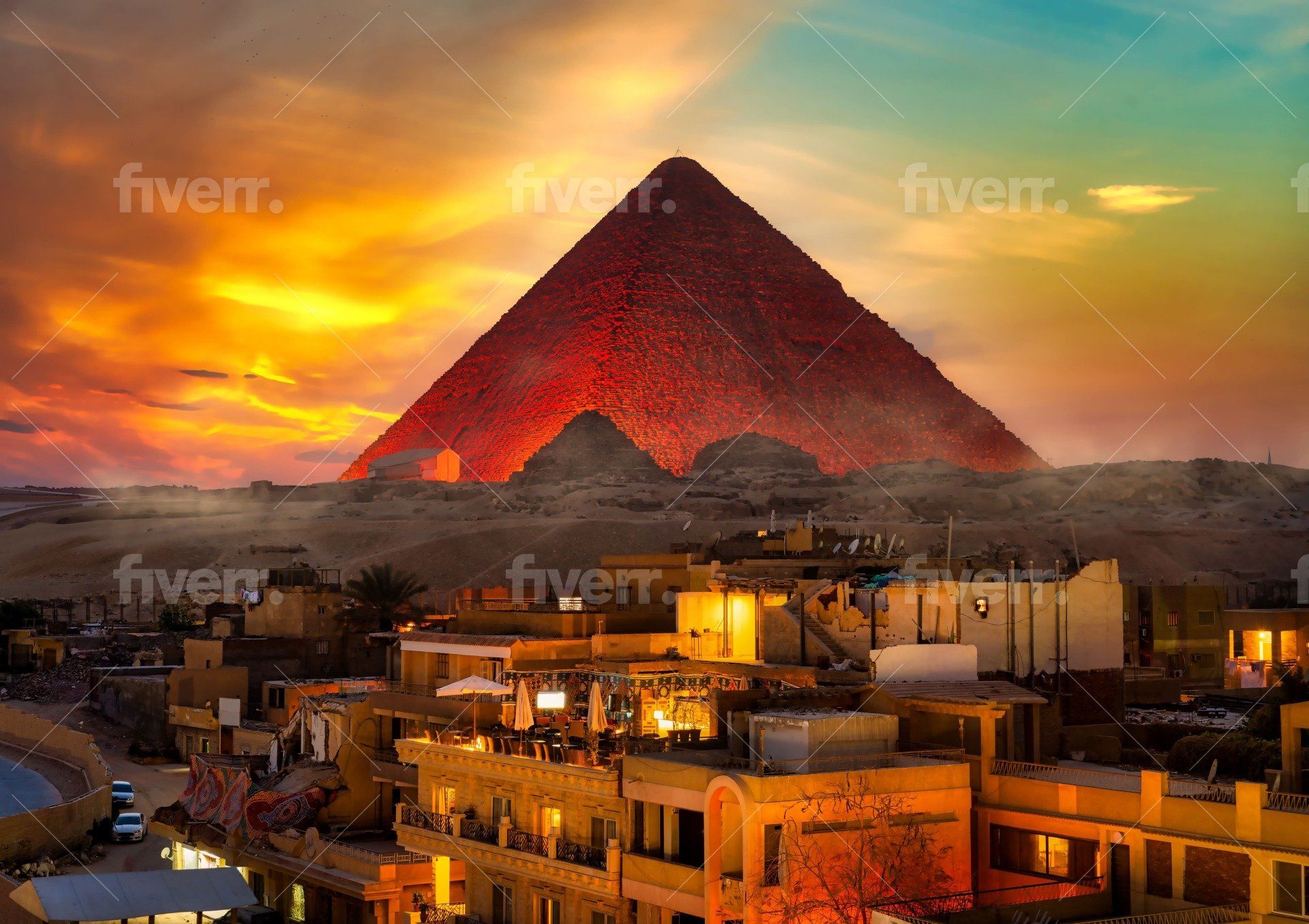Exploring Ancient Egyptian Sexuality What You Need to Know About Sex in the Ancient World
Introduction: Unveiling the Mystery of Sexuality in Ancient Egypt
Feeling naughty, history buffs? If your travels have led you to Egypt, the land of pharaohs and pyramids, you are in for a treat. Be prepared to unveil the secret and scandalous side of Ancient Egyptian culture. In today's "Walk (or strut) like an Egyptian" episode, we dive into the provocative world of sexuality in ancient Egypt – from the juicy myths to the most intimate discoveries. So, buckle up, put on your cheekiest smirk, and let's ride this seductive chariot back in time.
From the mysteries of the Sphinx and the Valley of the Kings to how one might indulge in a simple game of Senet - Ancient Egypt has long been an enigma shrouded in secrets that still bewilder us today. One particular subject, however, as captivating to our modern-day curiosity as it was perplexing to those from days past is understanding sexuality in Ancient Egypt – we oftentimes forget that there were ancient civilizations with dynamic views on love and relationships! From hieroglyphic depictions preserved for thousands of years, let's take a lighthearted journey through time together to unveil some noteworthy erotic inscriptions and peruse tantalizing tales from times gone by.
The Different Types of Sexual Expression Used By the Ancient Egyptians
In ancient Egypt, sexuality was a complex and multifaceted concept. From traditional Egyptian sexuality to the acceptance of homosexuality, there were many different ways in which people expressed their sexual orientation. By exploring these various forms of sexual expression, we can gain a deeper understanding of the culture and values of ancient Egypt.
A Brief Overview of Ancient Egyptian Sexual Expression
Once upon a time, in a land of pyramids, sphinxes, and pharaohs, Ancient Egyptians had an intriguing way of expressing their sexual desires. Picture this; hieroglyphics, those fascinating carvings on walls, were not only dedicated to depicting tales of the gods but also depicted the spicier side of human relations. You thought emojis were naughty? Hieroglyphics blushed at the intricate details of sexual expression they were commissioned to illustrate. From their bold and erotic poetry to their eyebrow-raising (and occasionally, jaw-dropping) art, the Ancient Egyptians were pioneers in exploring the sensual realm without fear or shame. They owned their desires, blurring the lines between the sacred and the sensual, leaving us some steamy relics to goggle at thousands of years later. Be it their creation myths or their love poems, their ancient scrolls unroll a captivating red carpet to their sexual utopia - an audacious, witty, and wild sexual wonderland.
How Ancient Egyptian Sexual Expression is reflected in Art & Literature
Picture yourself in ancient Egypt – perhaps you're adorning yourself with jewelry or writing hieroglyphics. Sure, you're familiar with
the great pyramids, the powerful pharaohs, and the
Nile River. But, have you ever stopped to think about the steamier side of this fascinating civilization? No? It's high time we dive into the passionate world of Ancient Egyptian sexual expression and its reflection in their art and literature. So grab your papyrus scroll and a refreshing beverage, and let's uncover the sultry secrets of this marvelous society.
1. Sacred Sexts and Erotic Poetry
It turns out the ancient Egyptians were quite the sensual bunch, unafraid of expressing their desires through the written word. Erotic poetry, inscribed on papyrus, recounted tales of passionate love affairs between gods and mortals, as well as between mere humans. These poetic expressions of love, lust, and longing reveal an intimate understanding of human emotions and the complexities of relationships. So, the next time you think of good old Rumi, remember that the Egyptians got there first!
2. Moaning Monuments and Sensual Statues
As you stroll through the ruins of ancient Egypt, you may stumble upon something both fascinating and blush-inducing: the abundance of erotic art. From passionate portrayals on tomb walls to suggestive sculptures, one thing is clear – the ancient Egyptians didn't shy away from displaying their sexuality. Artists often depicted varying degrees of nudity and signs of affection, illustrating their society's openness towards sensuality. It seems that, back in the day, "Netflix and chill" might have translated to something like "Temple and thrill"!
3. Sex Education in Hieroglyphics
Teaching about the birds and the bees was not a taboo topic in ancient Egypt. In fact, sex education was an integral part of a young individual's upbringing. Just like today, sexual development and themes of sensuality were often addressed through literature and art. Parents and educators fostered a culture that celebrated sexual awareness and education, as we can see through various hieroglyphic texts and illustrations. Quite progressive of them, don't you think?
4. Adult Toys and The-ever-Ready Egyptians
Yes, you read that right! Say hello to the ancient Egyptians' erotic toy collection. Artefacts recovered from excavations suggest that our ancestors had quite the flair for spicing things up in the bedroom (or should we say burial chamber?). These amorous objects were typically made from materials like stone, wood, or even pottery. If you thought ancient Egyptians led monotonous love lives, think again!
5. Godly Love Affairs and Mythical Passion
In the eyes of the ancient Egyptians, even the gods couldn't resist indulging in love and lust. Numerous myths recount steamy love affairs between deities, like that between Isis and Osiris, or Hathor and Ra. These erotic escapades reveal the ancient Egyptians' belief in the power of sexual union as well as its divine nature. Let's just say, when it came to matters of the heart (and other body parts), the gods were far from omnipotent!
There you have it – a glimpse into the sultry side of ancient Egypt! As we wander through the remnants of this enigmatic civilization, it's fascinating to discover the depths of their sexual expression and its significant presence in their art and literature. So the next time you find yourself mesmerized by Egyptian mythology or admiring their magnificent architecture, don't forget to appreciate the passion and eroticism intricately interwoven into the fabric of this captivating culture. After all, who says history has to be dry and dull?
What are Some Examples of Ancient Egyptian Poetry and Texts about Sex?
we'll dive right into some saucy examples of ancient Egyptian poetry and texts about love, lust, and everything in between. So grab your trowel and archaeologist's hat because we're about to excavate some steamy hieroglyphs!
1. The Beginnings - Love Poetry in Egypt
Before we jump into the sensual texts, a little background is in order. The ancient Egyptian culture is believed to have placed a high importance on sex and love, which were intricately linked with fertility and creation. This connection is evident in their love poetry, as couples dedicated their lustful verses to one another in hopes of invoking the divine through the earthly act of love-making. The poems, which date from as early as 2000 BCE, were written on papyrus and ostraca, offering us a charming peek into the intimate lives of yesteryear's lovers.
2. The Iconic Tale of Sinuhe
Now, let's drift through the winds of time to the Middle Kingdom period, where the illustrious tale of Sinuhe unfolds. In this story, the titular character is falsely accused of a royal assassination and flees to Syria. As his exile continues, he falls for the charms of a Syrian chieftain's daughter. A classic "forbidden love" scenario ensues, and the passion that sweeps them both off their feet is immortalized in vivid romantic descriptions bordering on the sensual. Was this the "50 Shades of Kemet" that had ancient Egyptians fanning themselves by the Nile? Quite possibly!
3. Beside the River – A Love Song
A favorite among Egyptologists and hopeless romantics alike, this poem, written around the 13th century BCE, depicts a sweet and tender conversation between two lovers. Composed in rhymed verses, the poem reveals the couple's intimate thoughts, fantasies, and desires, which all unfold along the Nile's banks. The woman likens her lover to a sacred crocodile, a flattery that is met with his equally creative metaphors. Who would have thought that comparing your love to a scaly reptile might have been the ancient equivalent of "hey, gorgeous"!
4. The Turin Erotic Papyrus
While words can stimulate the mind, images can make our eyes widen in surprise. Enter the Turin Erotic Papyrus, a scroll dating back to the New Kingdom era that features some relatively explicit illustrations. Divided into two parts, this scroll has a section depicting various sexual encounters between men, women, and even the occasional animal-headed deity. Found in the debris near the workers' village at Deir el-Medina, this scroll certainly paints an interesting picture of the mindset and humor of the ancient Egyptians. Oh, the things they must have gossiped about around the village bonfire!
5. The Seventh Day of Epagomenal Days
For our last example, we find ourselves at a curious temple text about Hathor and Ra-Horakhty. In the myth of the Seventh Day of Epagomenal Days, Hathor seduces the aging sun god Ra in order to rejuvenate him. By doing so, she ensures that the cycle of life and creation continues. The sensual imagery depicted in this popular myth reveals the ancient Egyptians' understanding of sexuality as a cornerstone of existence, a concept deeply rooted in their religious beliefs as much as their daily lives.
it's important to remember that these texts and images shed light on the human side of this fascinating culture. So often, we focus on the pharaohs, gods, and colossal monuments but leave out the beating heart that lies beneath. This love, lust, and laughter-filled insight into the lives of our ancient ancestors reminds us that, at their core, they were, after all, just people - loving, living, and pursuing their desires like the rest of humankind across the ages. May the romantic spirit of Ancient Egypt inspire all you travelers out there to pen some steamy verses of your own!
What Can We Learn from The Different Types of Sexual Expression Used By the Ancient Egyptians?
Oh, those Ancient Egyptians! We can't help but giggle at the idea of taking a peek into their bedroom antics. But believe it or not, their various forms of sexual expression can teach us a thing or two about love, life, and...well, some pretty raunchy artwork. Besides walking like an Egyptian, we can have a good old chuckle as we learn about how these passionate people coped with matters of the heart (and other body parts). From their steamy love poetry to kinky temple graffiti, their open-mindedness towards pleasure can encourage us to let our hair down - or, you know, unravel our mummy wrappings - and take the edge off the stiff and structured atmosphere still lingering in modern society. Just remember, when it comes to channeling our inner Cleopatra or King Tut, safety and consent come first! So, let's take a light-hearted stroll down the Nile and see what frisky pearls of ancient wisdom we can unearth.
Exploring Ancient Egyptian Culture & Beliefs Around Sex and Gender Roles
Imagine a time and place where sex was openly celebrated, gender roles were fluid, and pharaohs were spandex-free kink kings. Travel back with us to the steamy land of ancient Egypt, where their views on sex and gender roles might seem as exotic and intriguing as ancient mummies themselves. Prepare to be titillated, scandalized, and—above all—educated, as we unlock the secrets of one of humanity's most captivating ancient cultures. Don't forget your sunscreen, as things are sure to get hot!
Before we set sail down the Nile, allow us to shed some light on the sexual landscape of ancient Egypt. From the very beginning, sexuality was deeply entwined with their mythological fabric. For instance, consider the creation story of Atum (the "god of everything"): to kickstart the cosmos, Atum engaged in some intimate self-love, thereby gifting us the first divine siblings, Shu and Tefnut. Suffice to say, sex wasn't just a hot topic in ancient Egypt - it's the very foundation of their existence!
Now, let's talk about the pharaohs: ancient Egypt's answer to a frisky aristocracy. These high-born sexpots got their kicks in more ways than one. Observe the case of the scandalous pharaoh Pepi II, who thought nothing of employing a team of naked, honey-slathered slave girls to keep pesky bugs at bay! And can we talk about Cleopatra? This femme fatale wasn't all brains and beauty - rumor has it that she used her sexual prowess to woo powerful rulers like Julius Caesar and Mark Antony to advance Egypt's political interests. Cunning, to be sure, but also a testament to her overwhelming sexual charisma!
Allow us now to peel back the papyrus on ancient Egyptian gender roles. Surprise, surprise - they weren't exactly what we'd call "conventional" today! To begin with, Egypt's polytheistic society had gods who transcended stereotypical gender norms. For example, the hermaphroditic goddess Hapi, who boasted both teats and a beard, was believed to have the power to flood the Nile each year. Similarly, the goddess Isis, known for her maternal instincts and resourcefulness, was frequently depicted as a fierce warrior protecting her own. The unique combination of characteristics spanning multiple genders showcases ancient Egyptian religion's gender-fluid ethos.
How remarkably relaxed they were about sex, you ponder? Consider the Turin Papyrus: among the most fascinating artifacts that came out of ancient Egypt, this document reveals their titillating sexual attitudes. A full-blown erotic catalog, the papyrus visually instructs its viewers on the many positions and practices that ancient Egyptians indulged in, with nary a bashful or blushing face among them! To this day, it remains one of the most explicit pieces of literature produced in our human history.
But alas, it wasn't all sunshine, pharaohs, and sex-positivity in ancient Egypt. These pioneers in pleasure were also subject to certain social restrictions—sexual taboos, if you will. For starters, premarital sex was generally frowned upon, especially among the gentry. Incest between siblings was also limited to the gods and the royal family (all to preserve that divine lineage, of course). Although homosexuality wasn't explicitly condemned, they believed that masturbation was the ideal sexual practice to maintain a man's inner balance, rather than pursuing relationships with other men.
How Religion & Art Influenced Attitudes Towards Sex & Marriage
Picture this: ancient Egypt, a time when pharaohs ruled, pyramids towered, and cheeky Nile alligators roamed free. While impressive, these sights hide another intriguing element of Egyptian culture – attitudes towards sex and marriage. Believe it or not, religion and art played such huge roles in shaping these randy Egyptians' beliefs that even the gods couldn't escape Cupid's arrows. Embracing love and lust, Egyptian artists flaunted their skills with paintings of gods enjoying some steamy divine trysts. Think of them as the "Netflix and Chill" pioneers! These tantalizing artworks not only served as high-brow ancient erotica but also aimed to emphasize an essential part of their spirituality. So next time you're gazing up at the starry constellations, remember the hubba-hubba happenings amidst the ancient Egyptian art and culture that once guided their attitudes towards sex and marriage.
Sex and magic in Ancient Egypt
It's a Kind of Magic: Egyptian Delights in the Boudoir
Behold, ancient Egypt - the land of pharaohs, pyramids, and plagues! But that's not all; step foot into the land of lavish lifestyles, luxurious jewelry, and lascivious love-making. You read that right - beyond the shimmering sands, Egypt harbored another secret... sex and magic. If you're a traveler with a fondness for history and a sense of humor, join us in our exploration of how sex (the activity that's as old as life itself) and magic intermingled in ancient Egyptian culture. Who knows, you might just learn a trick or two!
Before we get into the thick of it, let's first consider how integral sex and lovemaking were in ancient Egyptian society. Contrary to contemporary Western beliefs, sexual relationships in ancient Egypt were regarded as both pleasurable and spiritual experiences. This culture held the belief that magic could enhance sexual experiences and, conversely, that sex could make magic more potent.
First, let's talk about the power of sexual symbolism in Egyptian art and writings. Scarabs, for example, represented the act of creation, based on the god Kephri, who bore the sun each day. Egyptian texts are not shy about mentioning "self-stimulation" by gods to bring forth life. Similarly, many temple walls depict sexual acts considered taboo in other ancient cultures. Open displays of sexual acts served as a powerful affirmation of life and ensured the continuation of divine energies.
Now, let's dive into aphrodisiacs (substances that increase libido when consumed). Ancient Egyptians went to great lengths to enhance their sexual experiences. They used certain foods like honey, milk, and pomegranate juice as strategically seductive lubricants. Alongside food items, they also concocted potent love potions, some even made of crocodile dung. No, we aren't recommending trying this at home! Such aphrodisiacs may have been given to partners during rituals as they prepared themselves for the act of lovemaking.
Of course, we cannot overlook the famous Egyptian god of fertility and sex, Min. Known as the "Great God With His Arm Raised," Min was often depicted with an erect phallus, symbolizing his everlasting virility. Ancient Egyptians celebrated the Festival of Min, a time of increased sexual activity, in hopes of increasing the fertility of the land. It's quite interesting to imagine that the prosperity of the Nile's floodplain might very well have depended on some enthusiastic lovemaking!
The ancient Egyptians believed that sex could also imbue objects with magical properties. The goddess Isis and god Osiris provided an endearing example. When Osiris was murdered, his body was dismembered, and Isis sought to find the missing pieces to bring him back to life. Despite losing his phallus to a catfish, Isis miraculously conceived Horus, using her magic and sexual energy. This trick played a vital role in sustaining the divine powers across the land.
Lastly, sexual imagery played a central role in ancient Egyptian spells. Love spells were designed to attract a partner or bind them to the spellcaster. These spells used personal items like strands of hair, nail clippings, or intimate articles of clothing as a way of linking the person physically to the magic. If you think about it, long before the days of social media and DM slides, the ancient Egyptians were sort of the pioneers of sliding into someone's heart...magically speaking, of course!
With a delicate balance of sex and magic, ancient Egypt managed to create a vibrant, intriguing culture that still intrigues us today. As modern travelers, we may not be able to experience the same level of connection to sex and magic in our daily lives; however, this fascinating slice of history serves as a reminder to embrace life's pleasures and the power held within our most intimate moments. So, the next time you find yourself in the mystical land of pyramids and sphinxes, spare a thought for those ancient Egyptians and their enchanting, daring ways.
Sex and its relation to astrology in ancient Egypt
When the Stars Align: A Glimpse into Ancient Egyptian Sexcapades and Astrology
Welcome, brave travelers, to the fascinating world of ancient Egypt, where sex and astrology played a prominent role in society. Imagine a civilization where these two concepts held such importance that they influenced everything from day-to-day activities to colossal architectural feats. So grab your papyrus and quill, and let's unravel this timeless connection between sex and astrology in the ancient Egyptian world.
1. Under the Sheets and Among the Stars: The Basics
Before we hop onto the sands of time, let's understand the core concepts. The ancient Egyptians believed in the power of the stars and their influence over various aspects of life, including sexuality. Indeed, this wisdom from the cosmos helped shape the sexual lives of both royalty and commoners. Astrology even played a role in establishing relationships, determining compatibility, and facilitating intimacy with help from lovers' respective birth charts and star alignments.
2. Cosmic Chemistry: When Horoscopes Met Hieroglyphs
We all know about the modern horoscope that predicts our relationship prospects, but did you know that the ancient Egyptians were way ahead of the curve? It turns out that Egyptians based compatibility on the belief that certain celestial bodies had a profound impact on individuals and their relationships. Through carefully observed star alignments, Egyptians could identify their most sexually compatible partners. So, it's pretty evident that they were the OGs of cosmic matchmaking!
3. Who's Your Mummy? Parenthood, Protection, and the Stars
The mystical bond between sex and astrology didn't end with compatibility. The ancient Egyptians believed that the positions of stars during the time of conception played a crucial role in the future life of the child. Parents sought the guidance of astrologers to not only ensure the safety and welfare of the mother and child but also to determine the best time to conceive. Stars were so important that they could decide the names, social status, and even the fate of the child in the eyes of the gods.
4. Aphrodisiacs: An Astrologer's Love Potion
Fertility was at the heart of ancient Egyptian civilization, and aphrodisiacs played an essential role in boosting libido and promoting sexual health. Astrologers would recommend the use of certain herbs and potions based on the couple's respective zodiac signs. One popular aphrodisiac from that time includes the blue Egyptian water lily, which was believed to promote arousal and pleasure. So whether you're a Scorpio or a Taurus, there was likely an ancient Egyptian counterpart with a titillating astrological concoction just for you!
5. The Grand Stage: Architecture, Sex, and Astrology
The connection between sex, astrology, and religious beliefs extended even to the breathtaking structures that define ancient Egyptian civilization. Temples including the Karnak and Luxor were built with significant cosmic alignments in mind, and archaeologists have uncovered artifacts suggesting that sacred sexual rites were performed within these hallowed spaces. The night skies would come alive as these monuments and their alignment with the cosmos helped bring couples together and secured their liaisons with the blessings of the gods.
So, there you have it – a fascinating romp through the sands of ancient Egypt where astrology and sexuality were inextricably linked. It's evident that the ancient Egyptians were, in many ways, enlightened and open about matters of sex, relationships, and the divine influence of the cosmos on human existence. Millennia later, these amazing insights continue to intrigue us, and they serve as remarkable testimony to the innovative and incredible spirit of a culture that truly believed in the power of the stars to guide their lives – even in the bedroom!
How Contraception & Other Practices Impacted Reproduction & Fertility Amongst the Ancients
Oh, the ancients! Those lovable buffoons stumbling around in their togas and loincloths, trying to wrap their heads around the whole "making babies" conundrum. You see, they had their own ways of controlling their burgeoning populations, with contraceptives and other practices to keep the baby-making in check. They didn't have pill dispensers shaped like cute elephants or smartphone apps, but they still managed to successfully impact reproduction and fertility amongst themselves. Imagine the sheer determination it must've taken to fashion a contraceptive device out of a crocodile dung, or the sheer audacity to swallow a potion made from the remains of a mule's earwax, all to prevent little kiddos from running around. In fact, if one of them turned pale at the sight of some parsley or squinted at the moonbeam, that might be reason enough to put the breaks on any reproductive activity (just in case!). Thanks to their inventive, albeit bizarre methods, our ancient ancestors kept the gene pool fresh whilst making sure the Earth didn't become a gigantic nursery of primordial babies.
Ancient Egyptian Kama Sutra: Exploring Erotic Antiquities
Let's delve into the lesser-known passion and sensuality of this ancient civilization: the erotic practices that originated in the hot sands of Ancient Egypt. Warning: you might need some fans to cool down after reading this one! So, without further ado, let's unleash the hidden romantic secrets of one of history's most fascinating civilization.
1. The Tomb of Meryt: Say Hello to Erotic Art
Our first destination will take us to the city of the dead, the infamous necropolis known as the Tomb of Meryt. As we enter this burial chamber dating back to the 14th century BC, prepare to feast your eyes on beautifully crafted erotic frescoes. The intention of the artwork was not primarily to stimulate, but rather, to represent the union of the gods and goddesses as well as promoting fertility and life extension. Nevertheless, we can't help but admire the ancient mastery behind the art and the surprise of finding erotica in such an unexpected place.
2. Ostraca: Erotic Expressions on Stones
As we wander deeper into the sands of Egypt, we come across the fragments of broken pottery called ostraca. Found in various sites across Ancient Egypt, these little treasures are adorned with sexually explicit images and phrases reflecting the daily life of commoners. These ostraca offer a glimpse into private lives, showcasing the importance of satisfying sexual impulses for the sake of maintaining harmony within relationships. There's nothing like a dirty joke to keep your spirits up in the face of daily ancient Egyptian strife!
3. Carnal Calendar: Handily Schedule Your Love Life
Now let's take a trip through time back to 1600 BC, where we lay our eyes on the Turin Papyrus - a calendar dictated by the lunar cycles. This papyrus wasn't just for tracking the phases of the moon; it also guided romantic partners on the best times to engage in passionate lovemaking based on the position of celestial bodies. As wanderers through the past, we can only speculate about the efficiency of such celestial guidance, but can imagine how beneficial such handy scheduling might have been.
4. Sacred Sexuality: Religion Intertwined with Pleasure
Unlike the modern-day perception of Ancient Egypt as a highly conservative society, sexuality and the divine often intricately intertwined. Ritualistic sexual practices and sacred prostitutes were widespread, with passionate encounters believed to bring worshippers closer to the gods. It's a pity we don't have a time machine to transport us back to experience firsthand the divine nature of such erotic experiences. Who wouldn't want to merge with the divine and satisfy their earthly desires in one fell swoop?
5. Pharaoh Playtime: Royal Roles in the Bedroom
As we explore further into the pleasures enjoyed by the upper echelons of Ancient Egyptian society, we uncover the importance of sexual expression among the ruling class. The pharaohs were believed to possess the divine masculine energy of the gods and were encouraged to engage in sexual rites to ensure the fertility of the land and people. As we take a deep breath and attempt to compose ourselves, we marvel at the thought of grand chambers with opulent settings where pharaohs and their consorts turned eroticism into a sensual art.
As we cross the sands of time and leave this sensual odyssey, we can fondly reminisce about our titillating exploration of Ancient Egyptian sexual practices. Here in one of the oldest civilizations in human history, we unveiled the passion, eroticism, and artistic mastery that pushed the boundaries of societal norms. Perhaps the ancient Egyptians were not so different from us after all, with their bedroom tales, intricate art, and desires for divine intimacy. While we can't beam back in time, we can at least live vicariously through their steamy stories and connect with the human desires that prevail across history.
Conclusion
Sex in ancient Egypt was an intricate, steamy, and surprisingly open part of their culture. As a modern-day traveler navigating this mesmerizing country, it's both intriguing and amusing to see just how much ancient Egyptians embraced and celebrated their sexuality. These risqué tales, from their lascivious deities to their penchant for intimacy, offer exciting insight into a seductive aspect of Egypt rarely covered in textbooks. So, as you wander through the enchanting land of ancient civilization, remember to keep a mischievous smile and an open mind, for you too may stumble upon some saucy secrets hidden for thousands of years.

